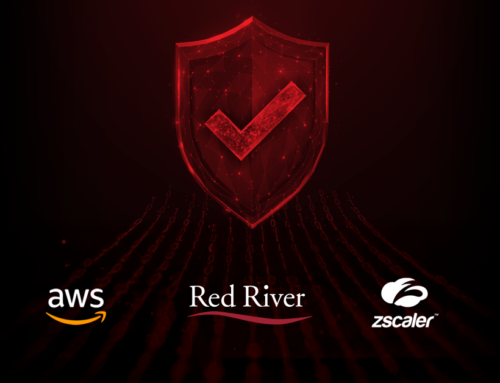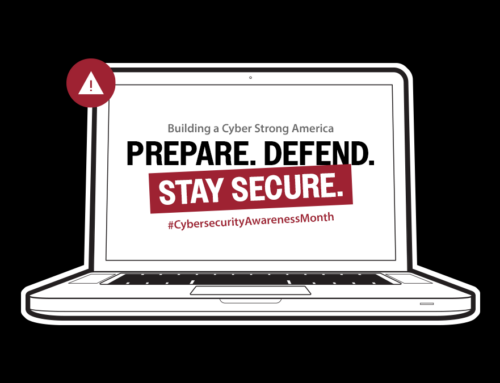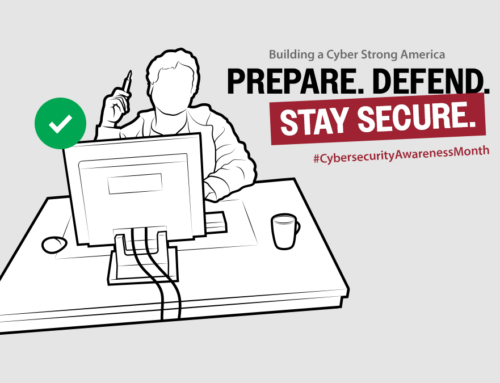
CMMC Audits Are Here – How Can You Prepare?
Update: As of November 10, 2025, the CMMC has gone into full effect. Federal contractors must now demonstrate full compliance with CMMC as part of all of their contracts going forward. If your organization needs help meeting CMMC requirements, Red River can help. Contact us today! In the meantime, we hope you enjoy our blog explaining how to prepare for your next CMMC audit.
In December 2024, the final rule for the Department of Defense (DoD) Cybersecurity Maturity Model Certification (CMMC) went into effect. The clock is ticking for companies in or trying to enter the Defense Industrial Base (DIB). Any company seeking lucrative DoD contracts must prove they follow the stringent cybersecurity guidelines outlined under the CMMC audit checklist.
If you want to do business with the government, you probably need to be ready for a CMMC audit now.
We’ve seen this coming; with a nearly 50% rise in third-party cybersecurity incidents year-over-year, the government increasingly emphasizes safeguarding sensitive information. Self-certification is no longer enough to surpass the introductory Level One CMMC rules. CMMC audits ensure companies meet the tiered cybersecurity standards proportional to the risk and scope of their operations. The new rule encompasses approximately 8,350 medium and enterprise-level organizations seeking Level 2 certification or higher.
CMMC audit preparation is rigorous. Many businesses wonder whether a practical roadmap exists to help them prepare for the next step in their CMMC compliance journey.
From understanding the audit process and addressing common challenges to implementing best practices and post-audit steps, this article will help equip you with actionable insights and tools to streamline your preparation for CMMC certification and compliance.
Understanding CMMC Audits
Released in October and effective in mid-December 2024, the CMMC final rule requires defense contractors working with controlled unclassified information (CUI) or federal contract information (FCI) to verify compliance with one of three levels within the scope of these requirements.
CMMC audits verify that organizations comply with the cybersecurity requirements outlined by the DoD and ensure the protection of Controlled Unclassified Information (CUI) within the supply chain. Organizations handling CUI must undergo a CMMC audit to obtain certification at the appropriate level for their operational and fiscal goals.
The Three Levels of CMMC Certification
CMMC 2.0 simplifies the certification structure into three levels:
- Level 1 (Foundational)
- Focus: Basic cybersecurity practices.
- Requirements: 17 controls aligned with FAR 52.204-21 (Basic Safeguarding of Covered Contractor Information Systems).
- Who Needs It: Organizations that only handle FCI.
- Level 2 (Advanced)
- Focus: Protection of CUI.
- Requirements: 110 controls aligned with NIST SP 800-171.
- Who Needs It: Organizations managing CUI in their operations.
- Level 3 (Expert)
- Focus: Advanced cybersecurity practices to protect CUI against Advanced Persistent Threats (APTs).
- Requirements: Additional controls aligned with NIST SP 800-172.
- Who Needs It: Organizations involved in highly sensitive operations.
When Are Companies Required to Conduct a CMMC Audit?
Companies must conduct a CMMC audit when they are part of DIB and need to bid on or fulfill contracts with the DoD that include specific cybersecurity requirements.
These audits are mandatory and encompass FCI and CUI. FCI includes contract-related information not intended for public release, while CUI encompasses sensitive data like design blueprints, manufacturing details or research specifications requiring enhanced safeguarding measures.
CMMC audits are most commonly required when the DoD includes specific cybersecurity clauses in its contracts. Organizations must achieve the certification level specified in the contract to be eligible to bid or be awarded the work. This requirement applies to prime contractors and extends to subcontractors and suppliers within the supply chain if they handle FCI or CUI. These requirements ensure that all participants within a project project maintain the necessary cybersecurity standards to keep data safe.
Companies must also complete a CMMC audit prior to awarding contracts involving sensitive or high-value work, such as projects linked to national security, critical defense technologies or those at risk from APTs. In these cases, certification is a non-negotiable prerequisite, reinforcing the importance of stringent cybersecurity measures.
The DoD is gradually implementing CMMC requirements across its contracts. While initially limited to specific pilot programs, the certification will become a standard requirement across the board in the coming years. A phased rollout gives organizations time to prepare but also underscores the need to proactively achieve certification to remain competitive and eligible for future contracts.
In addition to formal audits, many companies undergo voluntary pre-assessment reviews or mock audits to evaluate their readiness for the real thing. Though not mandatory, these reviews are a strategic move for organizations anticipating bidding on DoD contracts in the future.
Finally, companies with certification must renew it every three years to maintain compliance and eligibility for DoD work, ensuring their cybersecurity measures stay up to date with evolving threats and requirements.
Key Audit Challenges
Preparing for a CMMC compliance audit is a complex process that can overwhelm organizations, particularly those new to cybersecurity frameworks or with limited internal resources. What are the most common challenges when seeking CMMC, and how can organizations address them?
Identifying Compliance Gaps
The first and perhaps most significant hurdle is understanding where your organization currently stands in relation to CMMC requirements. Many businesses lack a clear view of how their cybersecurity measures align with the framework. Without this clarity, it’s easy to overlook vulnerabilities or misalignments that can jeopardize compliance.
A few specific issues organizations face when identifying compliance gaps include:
- Inadequate initial assessments: Internal reviews can fail to accurately map security practices to the CMMC framework, leading to a false sense of readiness.
- Legacy systems: Older systems may not meet the technical specifications required for CMMC, such as encryption standards or access control mechanisms.
- Misaligned processes: Operational processes may not support documentation and the evidence requirements critical for passing the audit.
Documentation Readiness

CMMC audits emphasize documentation. It’s not enough to have robust cybersecurity measures in place — your organization must provide detailed, well-organized documentation to demonstrate compliance.
Common documentation challenges include:
- Incomplete policies: Cybersecurity policies often lack the necessary detail to satisfy CMMC requirements. For example, a policy may outline general access control but fail to specify monitoring and auditing protocols.
- Fragmented documentation: Key information is often scattered across departments or systems, making presenting a cohesive compliance narrative difficult.
- Failure to update documents: Companies should review and update their cybersecurity policies and procedures to reflect changes in technology, business operations or CMMC guidelines.
Implementing Required Controls
CMMC requires organizations to implement various technical, operational and managerial controls by certification level. Meeting these requirements can be particularly challenging for small- to mid-sized businesses (SMBs) with limited budgets or technical expertise.
Specific implementation challenges include:
- Resource constraints: Many organizations lack the financial resources or personnel to implement advanced cybersecurity controls.
- Requirements Complexity: Some controls, such as multi-factor authentication (MFA) or continuous monitoring, can be technically complex.
- Vendor dependencies: Businesses often rely on third-party vendors for IT services, which may not fully align with CMMC requirements.
Staff Training and Awareness
Even with the best technology and policies in place, human error remains one of the top cybersecurity risks. Employees must understand their roles and responsibilities in maintaining compliance, but many organizations struggle to provide effective training.
Challenges include:
- Lack of awareness: Employees may not fully understand the importance of CMMC compliance or how their actions impact the organization’s readiness.
- One-size-fits-all training: Generic cybersecurity training often fails to address the specific practices and policies required by CMMC.
- Turnover: High staff turnover can lead to knowledge gaps, particularly if onboarding processes don’t include robust compliance training.
Managing Vendor Relationships
CMMC compliance often extends beyond an organization’s internal operations to third-party vendors. If vendors fail to meet the necessary cybersecurity standards, your organization’s compliance status could be at risk.
Specific challenges include:
- Lack of vendor accountability: Vendors may not prioritize CMMC compliance, particularly if they don’t understand how their services impact your organization.
- Inconsistent security postures: Vendors may have varying levels of cybersecurity maturity, leading to gaps in the supply chain.
- Contractual ambiguity: Many organizations fail to include clear cybersecurity requirements in vendor contracts, leaving compliance to chance.
Keeping Up with Evolving Requirements
The CMMC framework has undergone significant changes since its initial introduction, with CMMC 2.0 streamlining requirements and certification levels. Any future changes could create confusion and complicate your efforts to comply.
Challenges include:
- Uncertainty: Organizations may struggle to interpret updated guidelines or determine how they apply to specific operational processes.
- Compliance fatigue: Continuous requirement updates can overwhelm teams already multiple regulatory frameworks.
- Delayed implementation: Uncertainty about future changes may lead organizations to delay critical compliance activities.
Overcoming Internal Resistance
Implementing the changes required for CMMC compliance requires buy-in from multiple stakeholders, including senior leadership, IT teams and line-of-business managers. Resistance to these changes can slow progress and jeopardize your audit readiness.
Challenges include:
- Budget constraints: Leadership may hesitate to allocate the necessary resources for compliance activities.
- Change aversion: Employees and managers may resist new processes or technologies, particularly if they perceive them as disruptive.
- Lack of leadership support: Without strong leadership support, compliance initiatives may lack the necessary momentum to succeed.
Preparing for Unexpected Challenges
Finally, despite thorough planning, organizations may encounter unexpected hurdles during their CMMC compliance journey. These can range from technical failures to unforeseen audit findings.
Challenges include:
- Last-minute discoveries: Critical gaps may be uncovered too late to remediate them before an audit.
- Technical failures: Some systems or tools implemented to support compliance may fail during the audit, undermining readiness.
- Audit anxiety: Your teams may feel overwhelmed or unprepared during the audit, leading to oversights or errors.
Millions of dollars ride on the CMMC compliance imperative. Companies can prepare for the process by understanding the challenges and proactively addressing them.
Steps to Prepare for a CMMC Audit
Preparing for a CMMC audit involves a systematic approach to ensure compliance at the required level. The process typically entails:
- Conducting a gap analysis to measure your current cybersecurity posture against the CMMC level requirements. Identify areas of non-compliance and create a systematic remediation plan.
- Implementing the technical, operational and managerial controls required for your target CMMC. The process may involve upgrading infrastructure, refining processes or enhancing cybersecurity tools.
- Preparing and organizing documentation of all your current cybersecurity practices, policies and procedures. Of course, the documentation must align with CMMC requirements.
- Training staff on applying and maintaining CMMC requirements. They must understand the standards, their necessity and their roles in maintaining compliance. You should also address how key stakeholders will respond during the audit and/or remediation process.
- Scheduling a pre-assessment review with a CMMC Registered Practitioner (RP) or Certified Third-Party Assessor Organization (C3PAO). The goal is to identify residual gaps before the audit and refine your readiness.
Achieving CMMC Compliance with Red River
Navigating the complexities of CMMC compliance is challenging, but the right partner makes the journey achievable. Red River provides the expertise, tools and resources to simplify preparation and ensure your success. Our team understands the intricacies of CMMC certification and works closely with your organization to identify and address compliance gaps, manage documentation and train your workforce.
We offer our clients:
- Expert, experienced CMMC certification guidance.
- Tailored solutions that align with your certification level and operational goals.
- Proactive managed services to continuously monitor and address cybersecurity vulnerabilities, ensuring your organization stays compliant long after certification.
- Audit preparation, including comprehensive documentation, mock audits, staff training and more to ensure your team is ready to engage with auditors.
- Ongoing support that maintains compliance long past the initial audit.
Achieving CMMC compliance is more than meeting DoD requirements—it’s a strategic investment in your organization’s long-term security and success. With Red River, you can streamline the process, avoid common pitfalls and position your business as a cybersecurity leader. Contact us today.
Q&A
What do CMMC auditors look for?
CMMC auditors focus on several critical areas:
- Access controls to ensure only authorized personnel can access systems handling FCI or CUI.
- Incident response plans for reporting and containment data breaches.
- CUI protection such as encryption, data masking and other safeguards to protect sensitive information.
- Continuous monitoring and a process for proactively addressing system vulnerabilities.
Are there any tools or resources to help us prepare for a CMMC audit?
Several tools and platforms can simplify CMMC compliance and audit readiness:
- Microsoft Enclave: Provides secure environments for handling sensitive information, documentation templates and other compliance management tools.
- Consultants: Hiring a CMMC registered consultant like Red River can help address compliance gaps while guiding you through the process.

written by
Corrin Jones
Corrin Jones is the Director of Digital Demand Generation. With over ten years of experience, she specializes in creating content and executing campaigns to drive growth and revenue. Connect with Corrin on LinkedIn.




